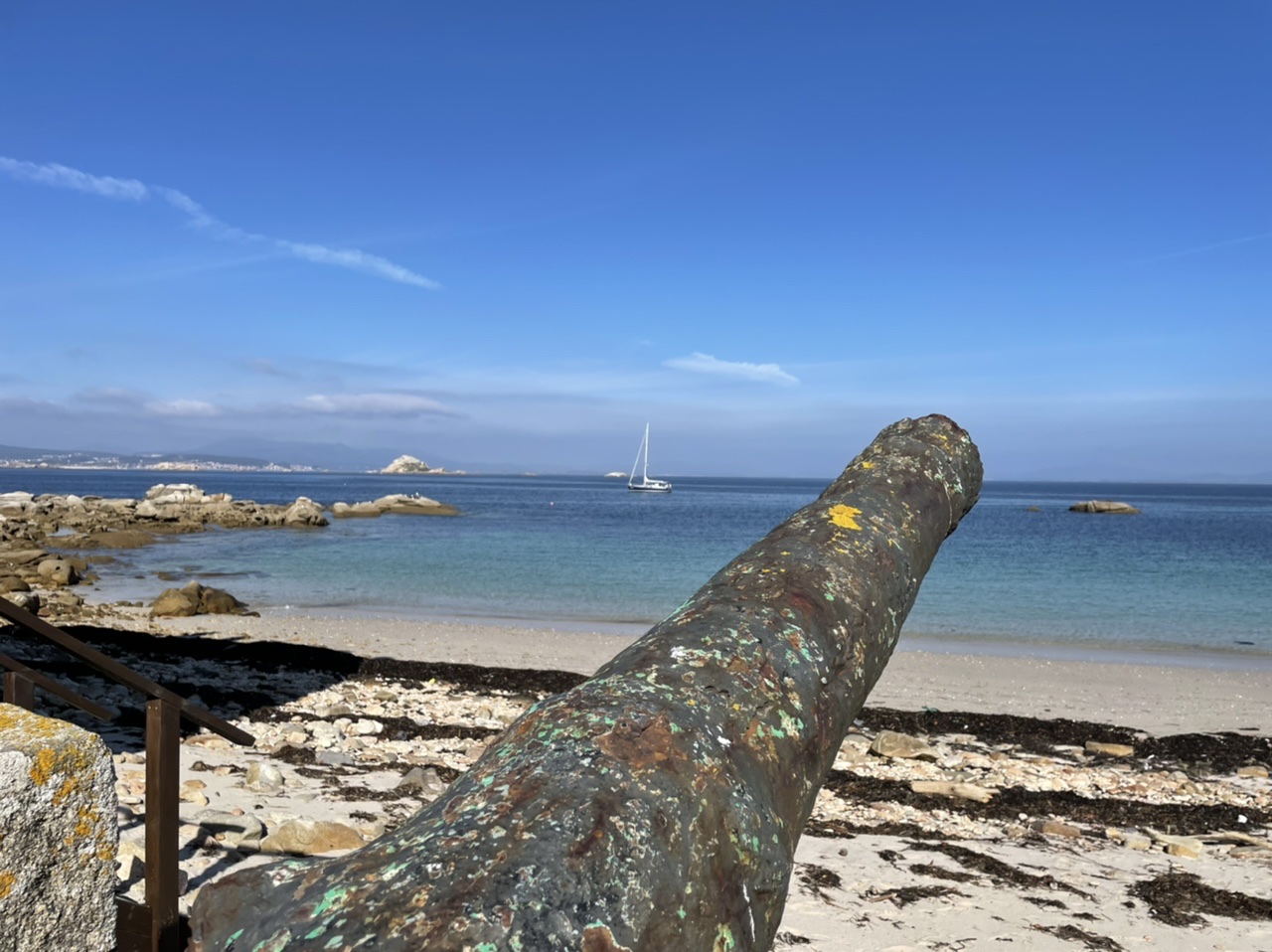After two weeks at home enjoying very much being with our loved ones we flew back to A Coruña to rejoin our Kabaal.
Here our trip to the Rias Bajas started. This is a string of Ria’s along the west Atlantic coast in Galicia, northern Spain. These bays or fjords are famous for their stunning nature and are providing safe harbours from the Atlantic.
We sailed to Camariñas where we arrived in the midst of the 30st Mostar do Encaixe.
It took us a while to discover that it was all to do about handmade lace for which Camariñas is famous. This was well celebrated by a large stage with all sorts of acts and covers of popular music such as ABBA, all nicely translated in Galician language of course .
The sun was still very warm and a walk along the rocky coast asked for a siesta in the hammock afterwards under the approving eye of our French neighbours in the harbour.


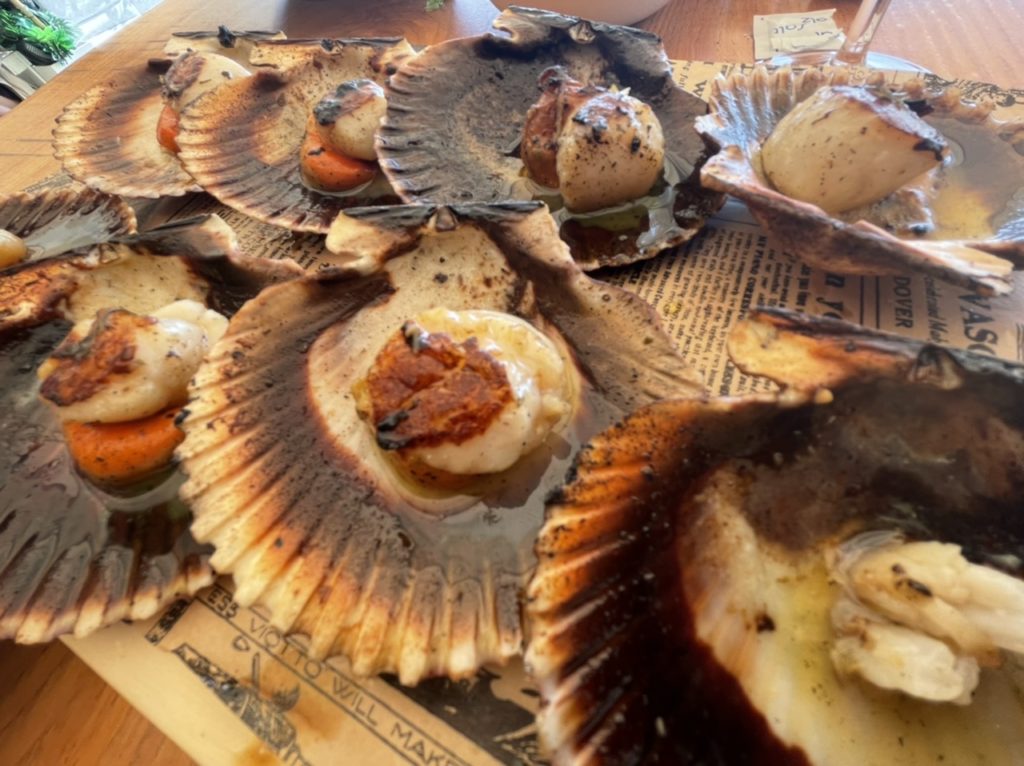
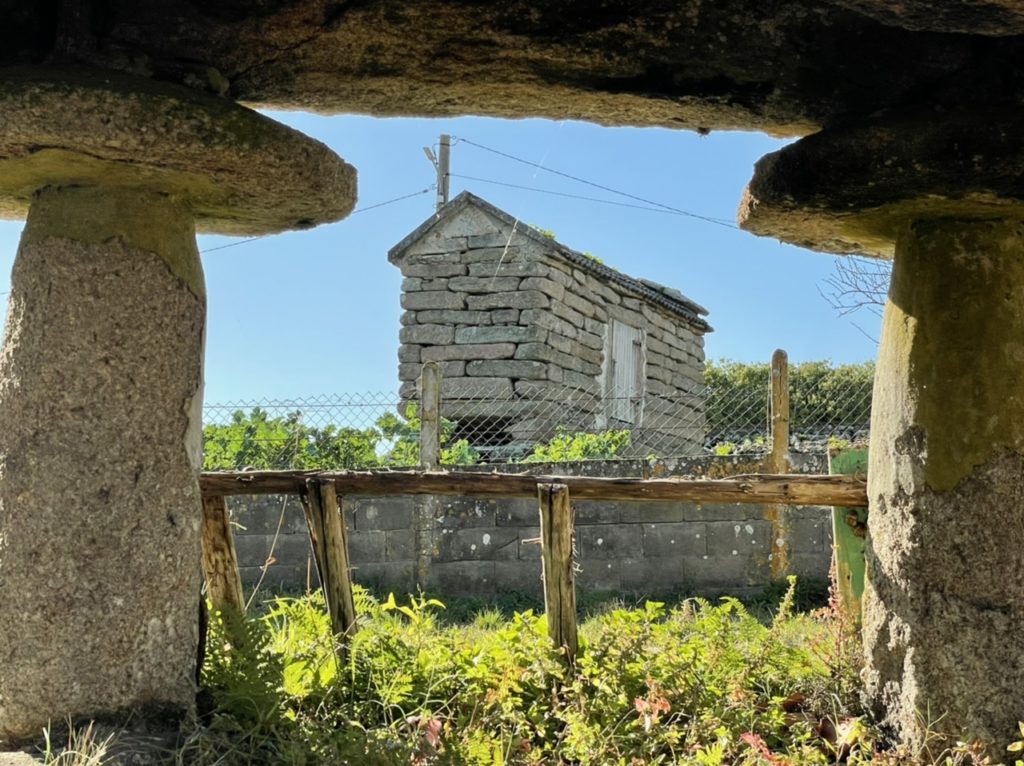
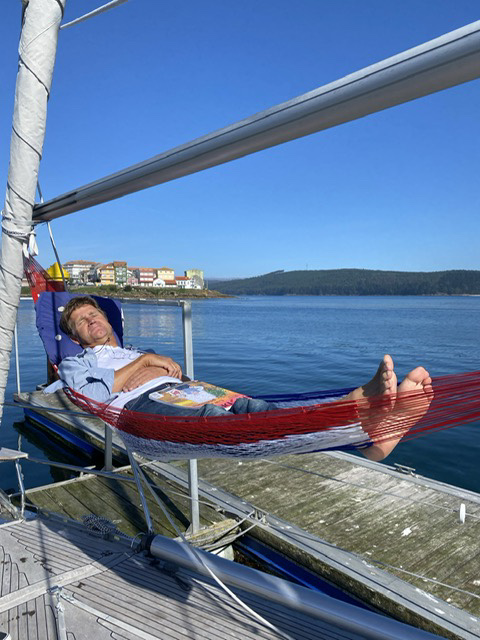
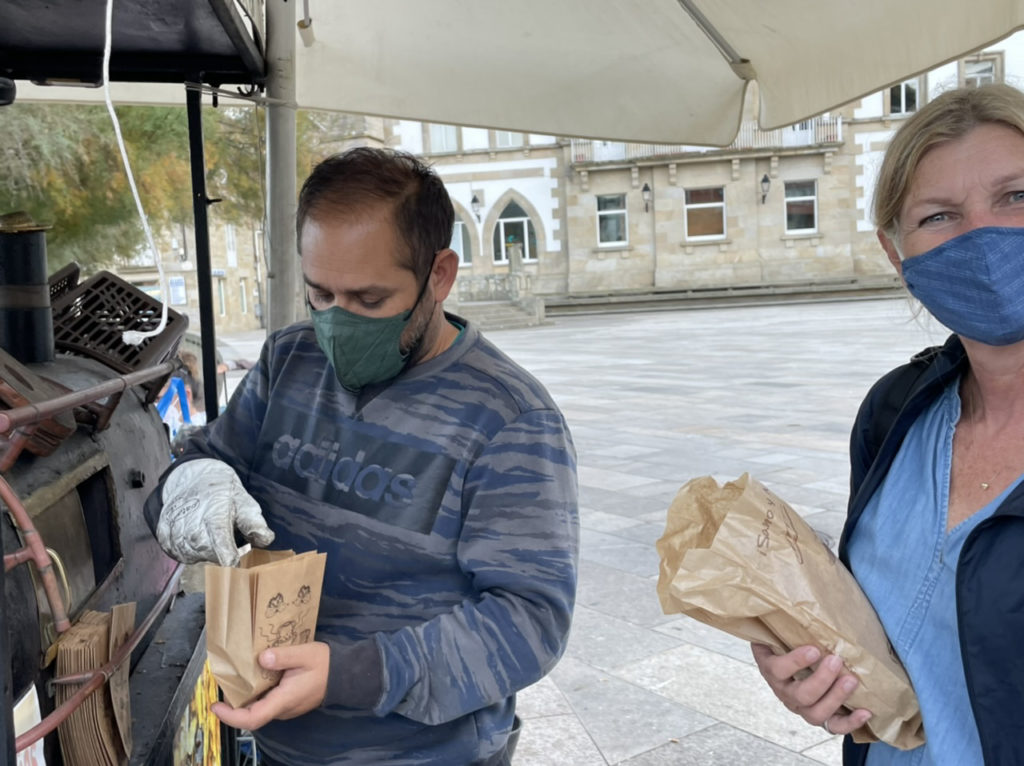
Cabo Fisterra is one of the famous sights of the Costa da Morte and the most westerly point of our trip. High foam breakers and sharp rocks made us keep a safe distance from its dangerous shores.
Orca’s are the sailors new fear
Another danger in these waters are the orcas which sometimes attack small sailing yachts like ours. They are particularly interested by the rudders of those yachts and bite them off in fierce attacks which can last up to an hour. A Finnish Swan sailing yacht “manned” by five lady’s was attacked and they could hear the orcas communicate by whistling sounds when inside their boat. Their rudder was bitten off and the orcas rocked the boat menacingly trying to turn it over. A frightening experience! Needless to say that we check the website of the orca iberico to check if they are near before we go out on the ocean. One Dutch guy with a ukelele posted a very sad song on YouTube while his boat is on the shore being in repair after an attack. We feel very sorry for him.

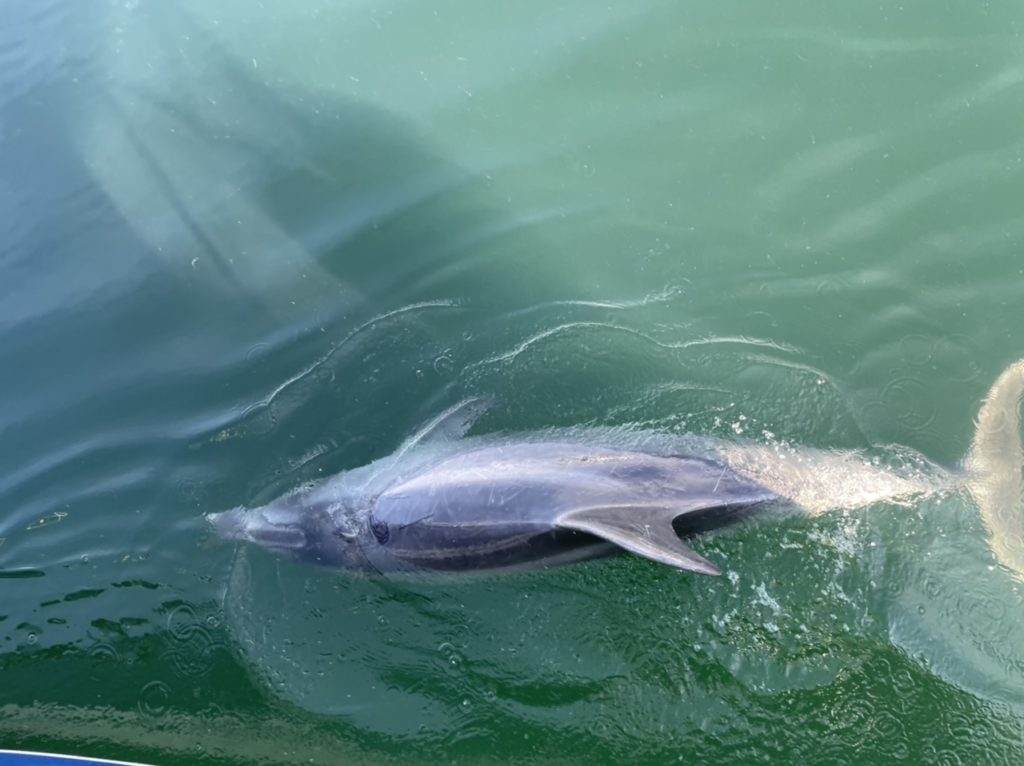
Muros was our next destination from where we planned to take a bus to Santiago de Compostela. It is famous for its dolphin which welcomes the ships entering the harbour and for sure we heard a noise next to the boat and there it was, enjoying the warm water coming from the engine. It accompanied us to our berth and disappeared when we switched the engine off. Next morning I heard the neighbour lady calling out sweetly: “Manolito, Manolito…” and there it was again to wish her a good morning by jumping and playing around in front of her. As it turned out Manolito was the name of the dolphin and not her husbands.
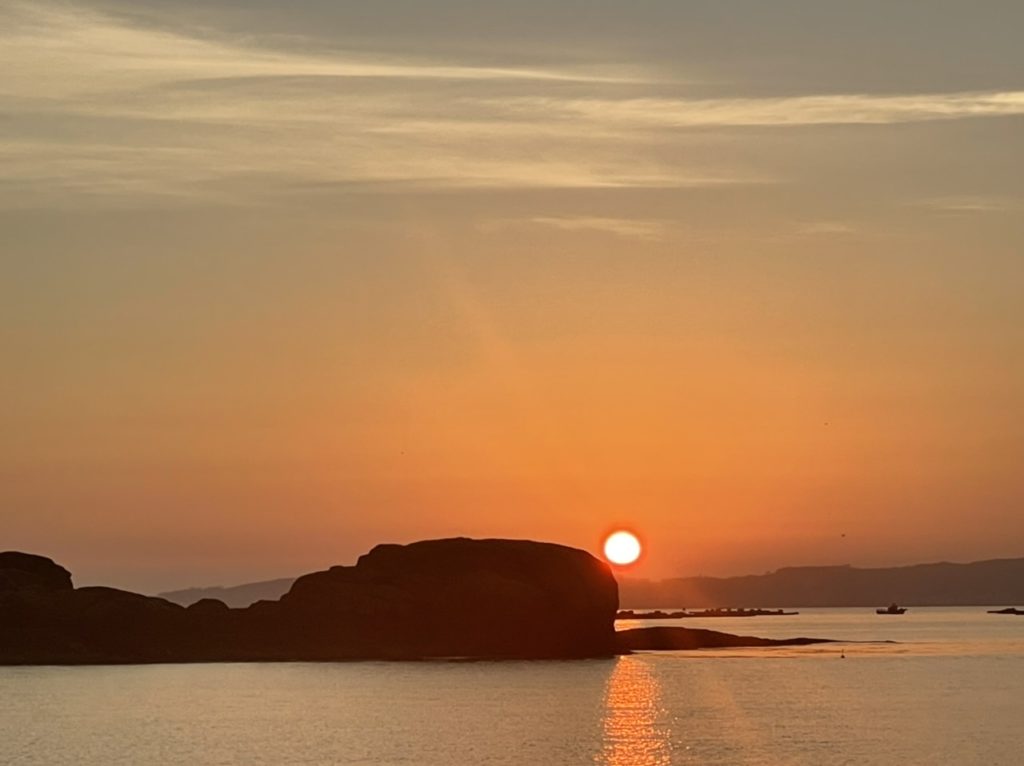
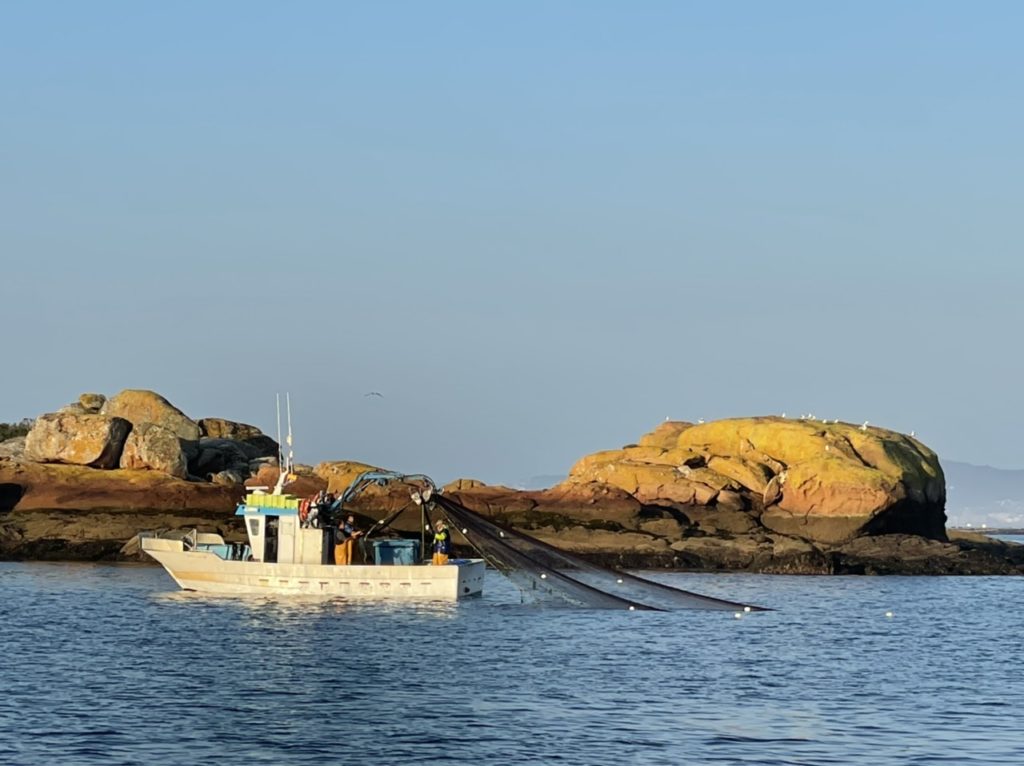
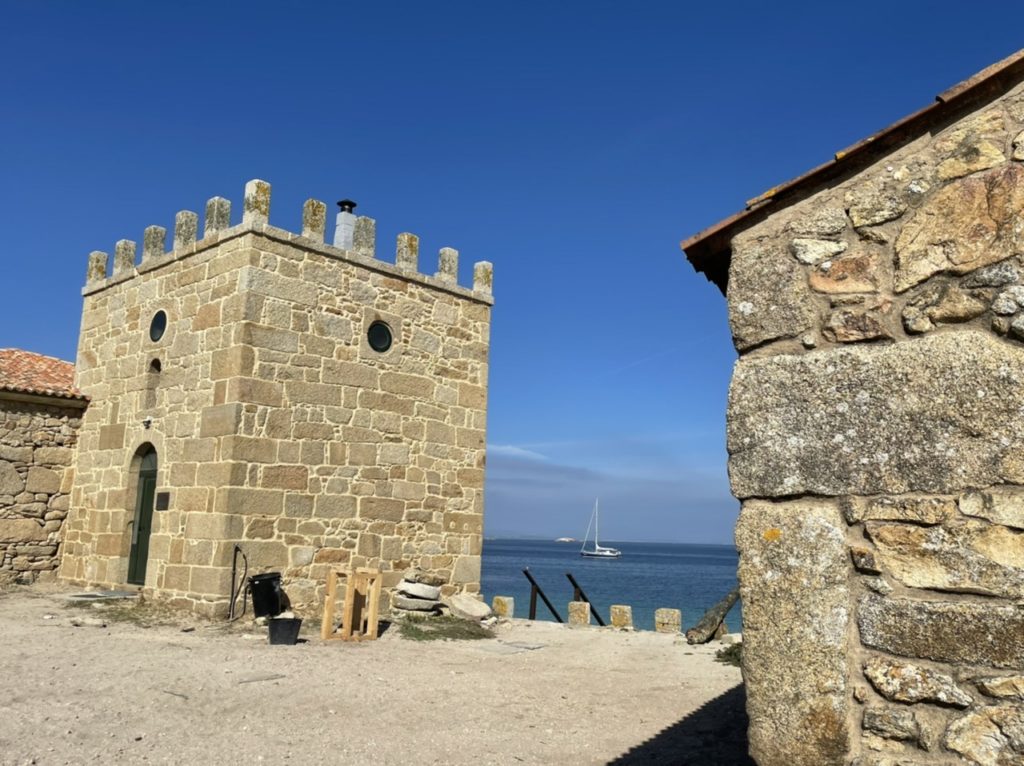

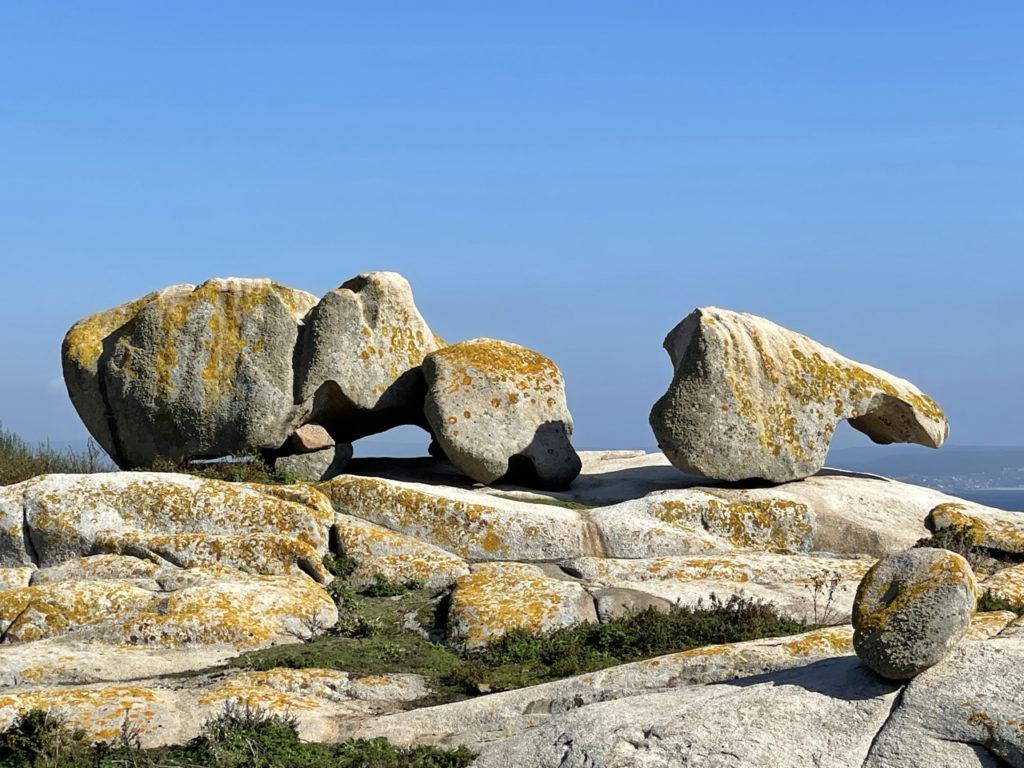

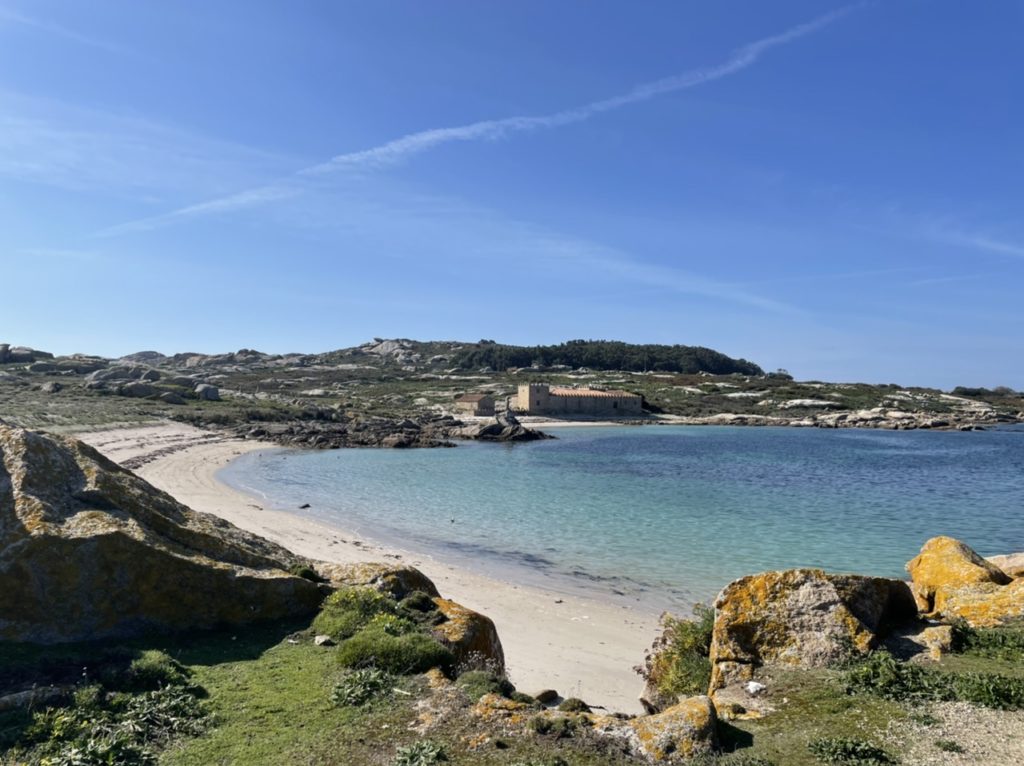
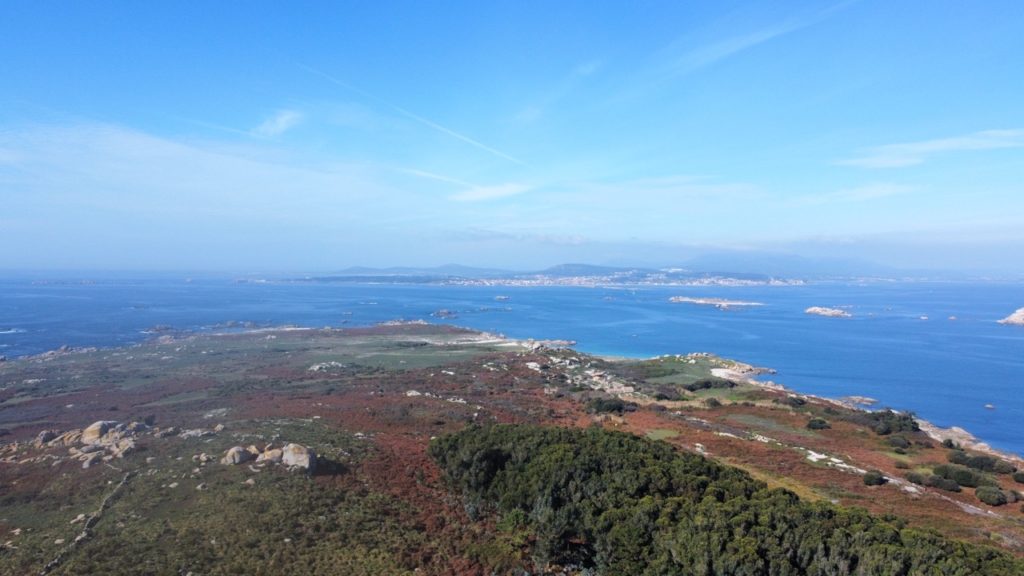
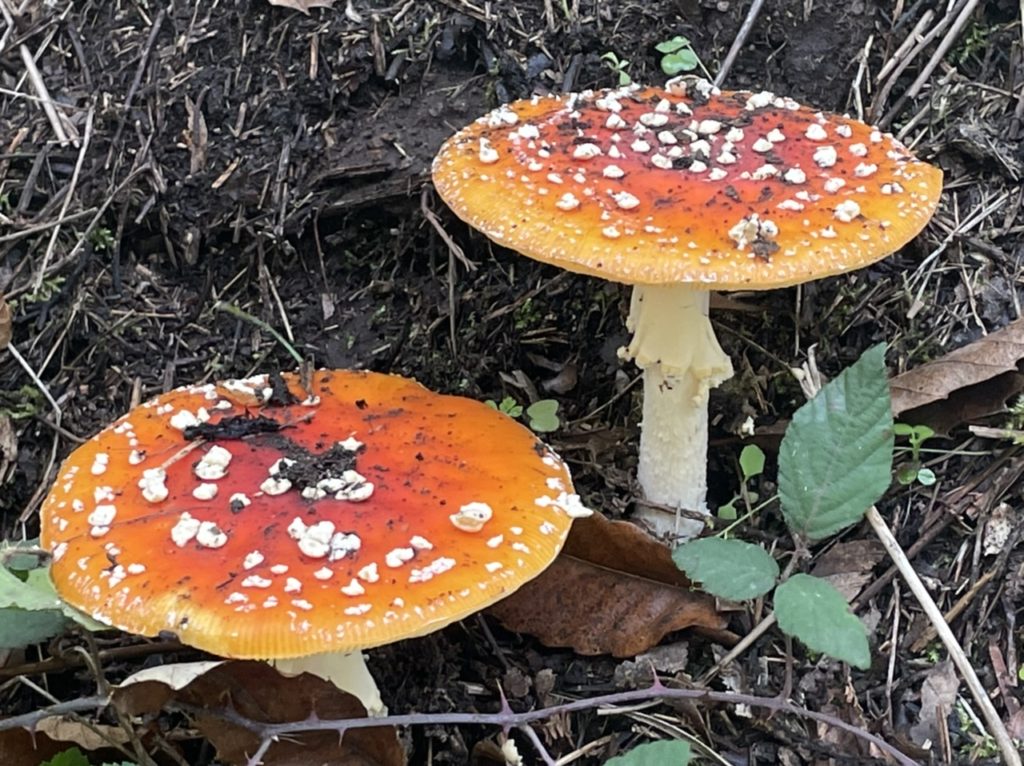
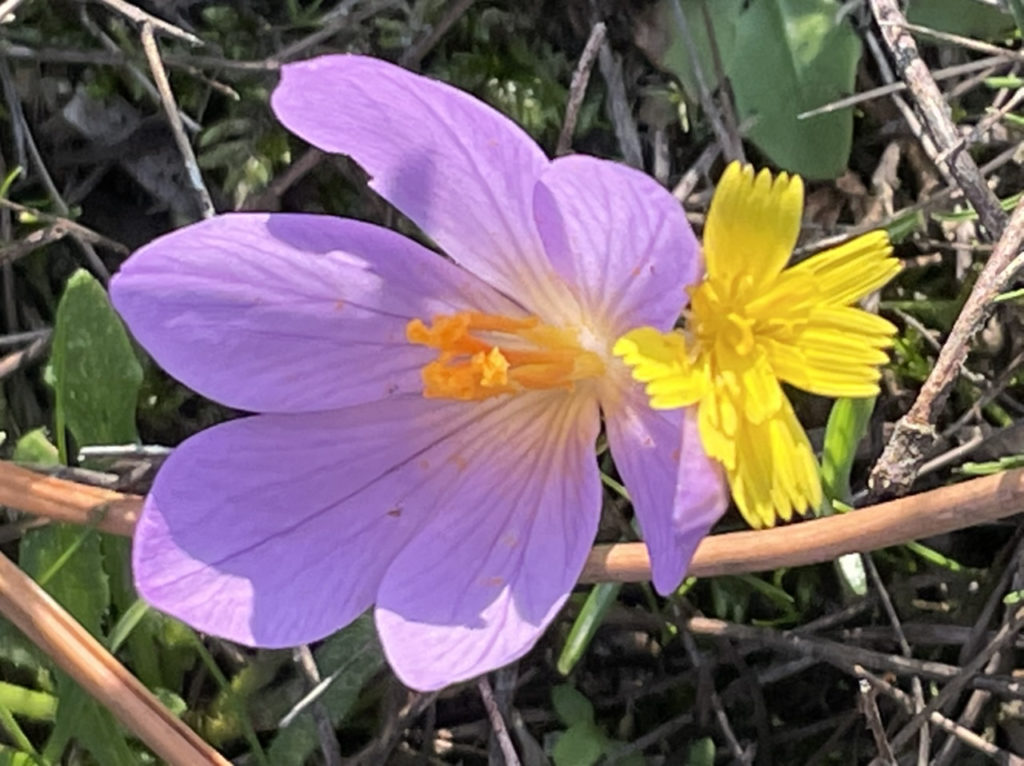
On we went to de Ria de Arousa and the stunning anchoring spot near Illa de Sálvora. The medieval looking castle turned out to be from the 60’s of the 20est century but looked very authentic to us. The rest of the island was taken up by stunning nature and wild horses.
Anchoring is a good way to explore the Rias and, when the weather allows it, is good for beautiful sunsets and moonlit nights. Early morning we woke up by the sound of many fishing vessels navigating around the Kabaal. Little did we know that we were in the midst of what seemed to be the best fishing grounds of the Ria de Arousa and we were kindly asked to move.
